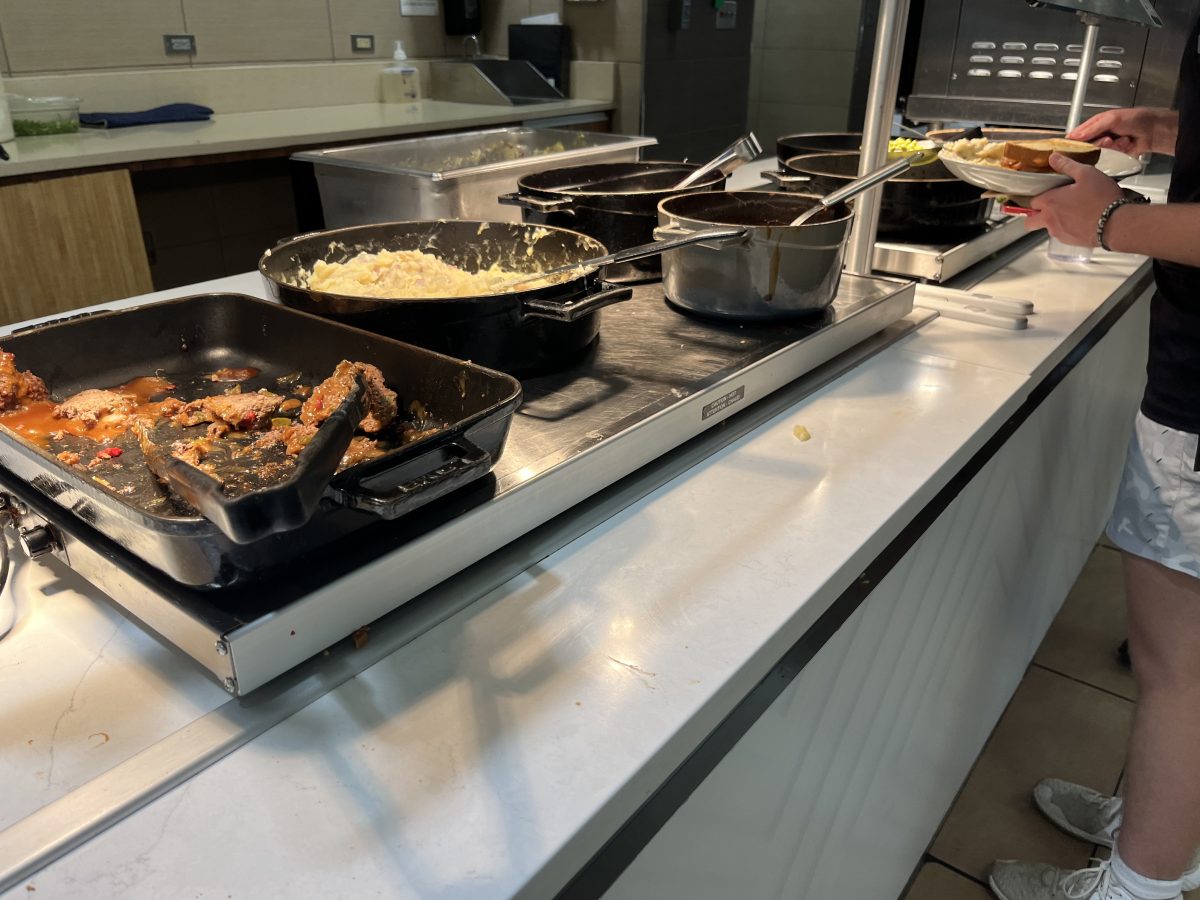Charlotte Li was eating her leafy greens at Mabee Dining Hall when she noticed something unusual: a flat, green insect in her food.
On Sept. 19, Li, first-year biochemistry and molecular biology major, put some leafy greens on her plate. After sitting down and flipping the vegetable over, she saw what appeared to be a caterpillar.
“I was too scared to do anything, so I threw the veggies away,” Li said. “I should have confirmed with Dining Services, but I was too unsure and I had to rush to other things.”
Li wasn’t the only student who recounted an experience like this. Foster Good, first-year engineering science major, said he noticed a worm-like bug in his broccoli on three separate occasions.
“I kind of lost confidence in the food [at Mabee],” Good said. “It hasn’t shattered my reality, but it’s not great.”
These student testimonies occurred throughout September with vegetables from the Let’s Toast station. Chase Taylor, resident district manager and Chartwells employee, noted that the details of these specific incidents are not confirmed, but that Dining Services has taken preventative measures.
“We’ve also increased the frequency and thoroughness of our produce inspections,” Taylor wrote in an email. “Our aim is to strengthen preventive measures at all levels of our workflow to ensure food safety and quality remain at the forefront of our operations.”
When Trinity switched dining providers from Aramark to Chartwells, there was a marked difference in the way student feeback is handled. With Chartwells, when a student concern is shared, it is recorded, reviewed and addressed with the culinary team and university partnership if necessary. With regards to the reports of bugs found in food, Taylor said he wants to address those concerns directly.
“I recognize how unsettling that must be. Food safety is something we take very seriously, and we are committed to ensuring such an incident does not occur again,” Taylor wrote in an email. “We aim to remain responsive to student needs, provide transparency in our processes and continuously improve based on the valuable feedback we receive.”
Mabee meals are often the first taste of food students have at college. Good mentioned that hearing upperclassmen’s thoughts of Mabee influenced his perception of the dining hall.
“I’ve always heard that it’s not the best. I came in with not-super-high expectations,” Good said. “It’s definitely lowered my confidence in eating the chicken or eating some of the vegetables. But other than that, I don’t really see too much of an issue with everything else.”
On Sept. 23, an anonymous user posted a photo of a Mabee burger with a shell-like pattern on the meat to Reddit. This pattern occurs when air bubbles escape from the grid-like pattern on frozen patties while cooking. While many online and on campus have voiced concern about the unusual appearance of the patty, the food is safe to eat. The post gained approximately 25,000 upvotes before it was removed from the platform, awaiting moderator approval.
Among the Norovirus outbreak and reports of bugs found in food, students have noticed a lack of food accessibility. Andrew Williams, first-year political science and philosophy double-major noted the importance of this for students with allergies and religious dietary practices.
“It’s not really accommodating to an actual lifestyle of having certain eating practices,” Williams said. “If you don’t have many options, you at least hope your options are safe to eat.”
Many students are still concerned about food quality, especially considering the price of meal plans. Students living on campus are required to pay for a meal plan, with each costing over $2,000 per semester. Li said that the price students pay for meals should reflect the quality.
“The amount of tuition we pay, the amount of dollars we pay for the meal plans, and there’s caterpillars in my food now. I mean extra protein yay, but wow,” Li said. “I’ve heard a lot of myths about Mabee Dining Hall, but it actually happened to me.”









